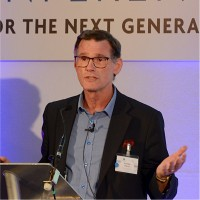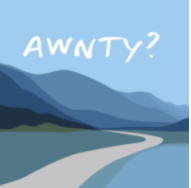An Interview With Robert Hurlston
“Learn the basics well – they will stand you in good stead for when you are guiding or supervising others”

Today, I had the pleasure of interviewing Professor Andrew Sherry for the latest in our series of interviews titled ‘Excerpts with the Experts’, in which we learn what it takes to get to the very top of the simulation field.
Andrew has recently moved to a Special Advisor role at the UK National Nuclear Laboratory, having been Chief Scientist there for the previous five years. In this role, he is responsible for stimulating innovation in technology, culture and practice in the UK nuclear sector to deliver economic impact and clean energy. The NNL plays a key role in the UK and global nuclear industry, reducing the cost of clean-up and decommissioning, maintaining critical skills and attracting talented new people to the industry.
Hi everybody, and welcome to another Fidelis – Excerpts with the Experts. Where we learn a little bit more about the path that led our simulation and CAE experts to where they are today, and what makes them tick!
Thanks Andrew so much for joining us today. First, I’d like to ask you about your journey to get here (career and otherwise). Can you tell us a little about your career path to date?
I have enjoyed a career in industry, academia and latterly in a UK national laboratory. My career has been largely associated with nuclear sector, with a technical focus on materials, manufacturing and structural integrity. Aside from technical work I have been involved in the development of science and innovation strategies, facilities and equipment, and skills. I also provide advice to government on nuclear safety and research.
As we’ve just heard, we all started from somewhere. Who were your role models or mentors, and what did you learn from them about simulation, engineering and life in general?
I have appreciated the advice and guidance of several people throughout my career. My university Professor Ted Smith taught me the importance of doing work that I enjoy and that energizes me. My first line manager, David Lidbury taught me the importance of clarity in analysis: the assessment of boundary conditions and input parameters, the insight needed in interpreting results, and the precision needed in writing up analytical work.
That’s great! Thanks for setting the scene. Let’s learn a little more about what you do currently. What does a day in the life of Andrew look like?
My roles are many and varied, from supervising university research in the field of materials and structural integrity that use a range of analytical and numerical codes, to advising on purpose-driven strategy at the National Nuclear Laboratory and advising government on nuclear safety and science. Lastly, I spend time as a mentor in enthusing the next generation to become who they are made to be.
OK, so we know what you do… but why do you do it? What about your job drives you to get out of bed in the morning?
I am passionate about helping to shape the future, whether it is by advancing knowledge through scientific research, advising on company strategy or government policy, or in helping people on their own journey’s to be who they are made to be, and do what they are made to do.
Awesome! Now, let’s get a bit more specific. What is your preferred simulation software?
I have used several simulation codes, but I always come back to ABAQUS.
And are you working on anything particularly exciting at the moment?
Yes… My field of research has always been materials and structural integrity. The development in the 3D imaging of materials during loading and fracture has opened up the opportunity to compare numerical simulations with experimental observations. Recently, I have done so in respect of hot isostatic pressing of stainless steels and nickel-based materials. Currently I am doing so in respect of the ductile fracture of pressure vessel steels.
We’ve all worked on things that we’re particularly proud of or that we enjoyed more than our typical work. What is the coolest project you’ve ever worked on?
One of the best projects I worked on was thought to be impossible. We took an 8 tonne hollow cylinder, over a metre in length and diameter, containing a full-length axial crack and spun it up to 3,500 rpm at 300 °C. If that wasn’t enough, we also sprayed the inside surface with cold water to simulate a pressurized thermal shock. Alongside the test design, I was involved in the numerical prediction of the result using ductile damage mechanics. We worked closely with the University of Sheffield on this simulation which employed the TOMECH a finite element code developed at Sheffield.
What does ‘cutting edge’ simulation look like today, in your opinion?
For me, cutting edge means that the simulation is getting ever-closer to reality – particularly where the simulation acknowledges the mechanisms involved in the material or component behavior. For me, this has often been improved materials models of cyclic plasticity, or of damage development and crack extension in three-dimensions.
You’ve clearly made it to a point in your career where we’re calling you an ‘expert’. A lot of our readers aspire to get to this point in their own careers, too! What is one piece of advice you would give an aspiring engineer that might help them grow in their simulation career?
Learn the basics well – they will stand you in good stead for when you are guiding or supervising others.
OK, well thanks for all of that. Here’s a fun one to finish with. Who, alive or dead, would you love to sit down and have a drink and a chat with? Why? and what would you ask them?
Nelson Mandela. My parents were born in South Africa and moved to the UK in the 1950s because of apartheid. We visited regularly to see family and friends as I was growing up. I’d love to talk with him him about forgiveness and leadership.
Well that was fantastic! Thanks so much again for taking the time with us today. We wish you continued success in your career – and I’m sure our paths will cross again very soon!

As well as his work at NNL and the University of Manchester, Andrew has an awesome podcast titled ‘Are We Nearly There Yet’, in which he interviews people from all walks of life to learn more about their career journey, where they came from and what they were made to do. Check that out here:
